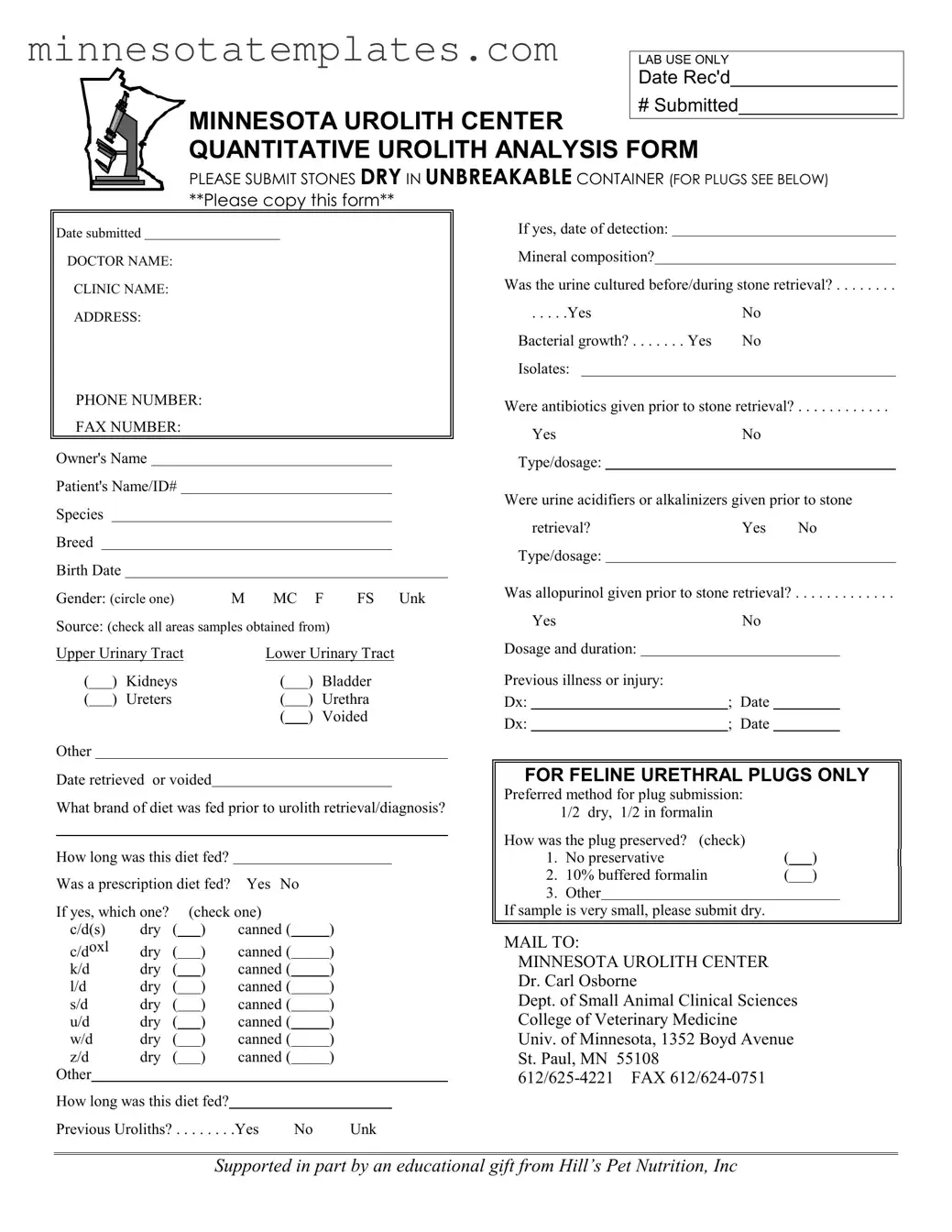The Minnesota Urolith Center form is an essential tool for veterinarians dealing with uroliths, or urinary stones, in pets. This form facilitates the quantitative analysis of uroliths, helping to determine their mineral composition and guiding treatment options. It requires detailed information from the submitting clinic, including the doctor's name, clinic details, and contact information. Pet owners must also provide crucial data such as the patient's name, species, breed, and any relevant medical history. Specific questions address previous illnesses, dietary habits, and any medications given prior to stone retrieval. The form includes sections dedicated to urine culture results and the type of diet fed to the pet, which can significantly influence urolith formation. For feline patients with urethral plugs, there are additional requirements regarding the preservation and submission of samples. The form must be submitted with dry stones in an unbreakable container, ensuring that the samples arrive intact for accurate analysis. By following the outlined procedures, veterinarians can effectively contribute to the understanding and management of urolithiasis in animals.
